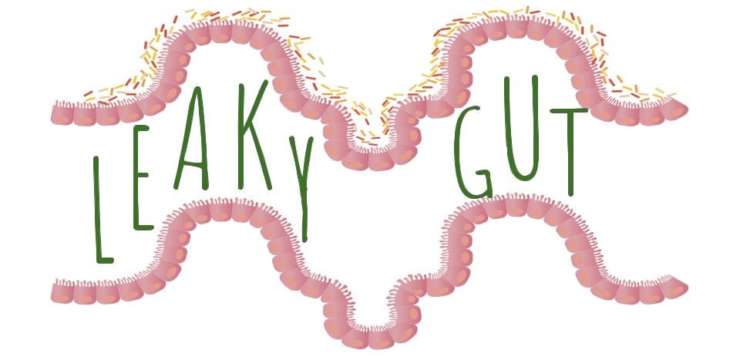
Discover effective chiropractic care solutions for sports injuries, sciatica, and enhance your recovery journey today.
Table of Contents
Comprehensive Guide to Sciatica Pain Relief Through Chiropractic Care
Sciatica pain can linger uninvited, radiating discomfort from your lower back down to your legs, making even simple tasks like sitting or walking feel like a marathon. For those in El Paso, TX, seeking relief, chiropractic care, particularly under the expertise of Dr. Alexander Jimenez, DC, APRN, FNP-BC, offers a symbol of optimism. This blog post dives deep into the world of sciatica, exploring its causes, how it intertwines with sports injuries, and why chiropractic care, combined with other non-surgical treatments, can be a game-changer for pain relief. We’ll also highlight Dr. Jimenez’s unique role in personal injury cases, blending humor to keep things light while delivering science-backed insights for a high school reading level.
What Is Sciatica? Understanding the Pesky Pain
Sciatica isn’t a condition that stands alone like a grumpy cat; it’s a symptom of an underlying issue affecting the sciatic nerve, the longest nerve in your body. This nerve runs from your lower back, through your buttocks, and down each leg, controlling muscles and sensation in your lower limbs. When it gets irritated or compressed, it sends out pain signals that can range from a mild annoyance to a full-blown “ouch, I can’t move!” moment.
The pain typically starts in the lower back or buttocks and shoots down one leg, sometimes reaching the foot. It might feel like a burning sensation, tingling, or even numbness, making you wonder if your leg is staging a protest. Common causes include:
- Herniated Discs: When the soft cushion between your spinal bones bulges or ruptures, it can press on the sciatic nerve.
- Spinal Stenosis: A narrowing of the spinal canal that squeezes nerves like a crowded elevator.
- Piriformis Syndrome occurs when the piriformis muscle in your buttocks becomes too tight, pinching the sciatic nerve; you can think of it as a muscle with a bad attitude.
- Spondylolisthesis: When a vertebra slips out of place, it crowds the nerve’s personal space.
- Pelvic Injuries: A broken pelvis or trauma can disrupt the nerves’ function, as noted in cases like those discussed at El Paso Back Clinic (Jimenez, 2023).
Sciatica can also be triggered by lifestyle factors like obesity, prolonged sitting, or wearing high heels (sorry, fashionistas). In severe cases, symptoms like extreme leg weakness or loss of bladder control signal a medical emergency called cauda equina syndrome, requiring immediate attention.
References
- Jimenez, A. (2023). Low back pain & sciatica caused by a broken pelvis. El Paso Back Clinic. elpasobackclinic.com/low-back-pain-sciatica-caused-broken-pelvis/
- National Institute of Neurological Disorders and Stroke. (2023). Sciatica. PubMed. pubmed.ncbi.nlm.nih.gov/?term=Sciatica
The Musculoskeletal Connection: Why Sciatica Loves to Crash the Party
Your musculoskeletal system—bones, muscles, and joints—works together like a well-choreographed dance team. But when one part missteps, like during a sports injury, the whole performance can go haywire, leading to sciatica. Sports injuries, whether from a soccer slide tackle or an overzealous gym session, can stress the musculoskeletal system, causing inflammation, muscle imbalances, or structural damage that irritates the sciatic nerve.
How Sports Injuries Contribute to Sciatica
Imagine your body as a Jenga tower. A sports injury is like pulling out a critical block, making the whole structure wobbly. Here’s how it happens:
- Trauma to the Pelvis or Spine: A fall during a basketball game or a tackle in football can cause a pelvic fracture or spinal misalignment, directly pressing on the sciatic nerve. As highlighted by El Paso Back Clinic, pelvic injuries are a significant culprit (Jimenez, 2023).
- Muscle Imbalances: Overworking certain muscles, like the glutes or hamstrings, during sports can lead to tightness or weakness, which can cause the spine or pelvis to become misaligned. The piriformis muscle, in particular, can become a sciatica-causing bully if it gets too tight (Mishra et al., 2021).
- Inflammation: Injuries like sprains or strains cause inflammation, which can swell tissues around the sciatic nerve, squeezing it like a too-tight hug.
- Repetitive Stress: Runners or cyclists who pound the pavement or pedals for hours may develop microtrauma in the lower back, setting the stage for sciatica.
Overlapping Risk Profiles
Sciatica doesn’t play favorites; it can strike anyone, but certain factors make you more likely to get an invitation to the pain party:
- Obesity: Extra weight puts pressure on the spine, increasing the risk of disc herniation or nerve compression (Zhang et al., 2022).
- Sedentary Lifestyle: Sitting for long periods, like binge-watching your favorite show, can weaken core muscles and stress the lower back.
- Poor Posture: Slouching during work or workouts can misalign the spine, inviting sciatica to the dance.
- Age: As you age, spinal discs lose their cushy bounce, making them more prone to bulging or herniating.
Sports injuries amplify these risks by adding acute stress to an already vulnerable system. For example, a soccer player with poor core strength who takes a hard fall might sprain an ankle and also trigger a chain reaction that leads to sciatica.
References
- Jimenez, A. (2023). Low back pain & sciatica caused by a broken pelvis. El Paso Back Clinic. elpasobackclinic.com/low-back-pain-sciatica-caused-broken-pelvis/
- Mishra, P., et al. (2021). Piriformis syndrome: A cause of nondiscogenic sciatica. Current Pain and Headache Reports, 25(2), 10. pubmed.ncbi.nlm.nih.gov/33409728/
- Zhang, Y., et al. (2022). Causal associations of obesity with the intervertebral degeneration, low back pain, and sciatica: A two-sample Mendelian randomization study. Frontiers in Endocrinology, 13, 1041659. pubmed.ncbi.nlm.nih.gov/36589825/
Chiropractic Care: The Superhero of Sciatica Relief
Chiropractic care is like the superhero swooping in to save the day when sciatica has you down. Unlike painkillers that just mask the problem (like putting a Band-Aid on a leaky pipe), chiropractic care, especially as practiced by Dr. Alexander Jimenez, targets the root cause of sciatica with non-invasive techniques.
Why Chiropractic Care Works
Chiropractors like Dr. Jimenez use spinal adjustments and manual manipulations to realign the spine, taking pressure off the sciatic nerve. Here’s the science behind why it’s effective:
- Restoring Spinal Alignment: Misaligned vertebrae can compress the sciatic nerve. Adjustments gently nudge the spine back into place, giving the nerve room to breathe (Davis et al., 2022).
- Reducing Inflammation: Chiropractic care can decrease inflammation around the nerve, easing pain and improving mobility (Jimenez, 2020).
- Improving Blood Flow: Adjustments enhance circulation, delivering oxygen and nutrients to injured tissues, speeding up healing.
- Relaxing Tight Muscles: Techniques like soft tissue therapy loosen muscles like the piriformis, which might be strangling the sciatic nerve (Mishra et al., 2021).
Dr. Jimenez’s approach at El Paso Health Coach Clinic integrates functional medicine, focusing on the whole person, not just the pain. By combining chiropractic adjustments with lifestyle changes, he ensures long-term relief rather than a quick fix.
Clinical Evidence
Studies back up chiropractic care’s effectiveness. A 2022 retrospective cohort study found that chiropractic spinal manipulation reduced the likelihood of lumbar discectomy in patients with disc herniation and radiculopathy, suggesting it’s a viable alternative to surgery (Davis et al., 2022). Another review showed that non-surgical treatments, including chiropractic care, are often as effective as surgical options for sciatica, with fewer risks (Lewis et al., 2023).
References
- Davis, D., et al. (2022). Association between chiropractic spinal manipulation and lumbar discectomy in adults with lumbar disc herniation and radiculopathy: Retrospective cohort study using United States data. BMJ Open, 12(12), e068262. pubmed.ncbi.nlm.nih.gov/36523292/
- Jimenez, A. (2020). Treating severe & complex sciatica syndromes. Sciatica Pain and Treatment Clinic. sciatica.clinic/2020/07/24/treating-severe-complex-sciatica-syndromes-el-paso-tx-2020/
- Lewis, R. A., et al. (2023). Surgical versus non-surgical treatment for sciatica: Systematic review and meta-analysis of randomised controlled trials. BMJ, 381, e070730. pubmed.ncbi.nlm.nih.gov/37076187/
- Mishra, P., et al. (2021). Piriformis syndrome: A cause of nondiscogenic sciatica. Current Pain and Headache Reports, 25(2), 10. pubmed.ncbi.nlm.nih.gov/33409728/
Sports Injury Rehabilitation- Video
Dr. Alexander Jimenez: El Paso’s Go-To for Personal Injury and Sciatica
In El Paso, Dr. Alexander Jimenez stands out as a beacon for those dealing with sciatica, especially from personal injuries like car accidents or sports mishaps. His dual expertise as a chiropractor and board-certified Family Nurse Practitioner (FNP-BC) makes him a unique asset, bridging the medical and legal worlds for patients.
Personal Injury Expertise
Personal injuries, such as those from auto accidents or workplace incidents, often lead to sciatica due to trauma to the spine or pelvis. Dr. Jimenez excels in:
- Advanced Imaging and Diagnostics: He uses state-of-the-art X-rays, MRIs, and ultrasounds to pinpoint the exact cause of sciatica, ensuring treatments are precise (Jimenez, 2018).
- Dual-Scope Procedures: Combining chiropractic adjustments with functional medicine, he addresses both structural and systemic issues, like inflammation or poor nutrition, that exacerbate sciatica.
- Legal Liaison: Dr. Jimenez’s detailed documentation and diagnostic evaluations are critical for personal injury cases, providing clear evidence for insurance claims or legal proceedings. His ability to translate complex medical findings into understandable reports makes him a trusted partner for attorneys and patients alike.
His clinic, as noted on LinkedIn, emphasizes holistic healing, helping victims recover mobility and quality of life without relying on prescription drugs (Jimenez, 2025).
Patient Success Stories
Patients like George Lara, a retired contractor, have praised Dr. Jimenez for restoring their ability to walk after debilitating sciatica from a back injury (Jimenez, 2018). Another patient, Edgar M. Reyes, found relief through chiropractic care, allowing him to return to work (Jimenez, 2018). These testimonials highlight Dr. Jimenez’s patient-centered approach, focusing on natural healing and long-term wellness.
References
- Jimenez, A. (2018). Sciatic nerve pain treatment El Paso, TX | George Lara. Wellness Doctor RX. wellnessdoctorrx.com/sciatic-nerve-pain-treatment-el-paso-tx-george-lara/
- Jimenez, A. (2018). Sciatica nerve pain treatment El Paso, TX | Edgar M. Reyes. Push as Rx. pushasrx.com/sciatica-nerve-pain-treatment-el-paso-tx-edgar-m-reyes/
- Jimenez, A. (2025). Dr. Alex Jimenez’s professional profile. LinkedIn. www.linkedin.com/in/dralexjimenez/
Combining Chiropractic with Other Non-Surgical Treatments
Chiropractic care doesn’t work alone like a lone wolf; it teams up with other non-surgical treatments to tackle sciatica from all angles. Dr. Jimenez’s integrative approach at El Paso Health Coach Clinic includes:
- Nutritional Guidance: A diet rich in anti-inflammatory foods, like leafy greens and omega-3s, reduces inflammation around the sciatic nerve. Dr. Jimenez’s “Patient Focused Diet Plans” emphasize whole foods over processed junk (Jimenez, 2023).
- Exercise and Physical Therapy: Targeted exercises strengthen core muscles, improve flexibility, and prevent future injuries. Think of it as giving your spine a gym membership.
- Acupuncture: Studies show acupuncture can reduce sciatica pain by stimulating nerve pathways and releasing endorphins, the body’s natural painkillers (Li et al., 2021; Qin et al., 2019).
- Massage Therapy: Deep-tissue massage relaxes tight muscles and improves blood flow, easing sciatica symptoms (Jimenez, 2018).
- Spinal Decompression: This therapy gently stretches the spine, relieving pressure on compressed nerves (Jimenez, 2023).
These treatments work together like a well-oiled machine, addressing both the symptoms and root causes of sciatica. For example, a patient with a herniated disc might receive spinal adjustments to realign the spine, acupuncture to reduce pain, and nutritional advice to lower inflammation, creating a comprehensive recovery plan.
References
- Jimenez, A. (2018). Chiropractic therapy for sciatica pain. El Paso Back Clinic. dralexjimenez.com/chiropractic-therapy-sciatica-pain-el-paso-tx-video/
- Jimenez, A. (2023). Functional medicine importance. Health Coach Clinic. healthcoach.clinic/
- Li, Q., et al. (2021). The management of sciatica by acupuncture: An expert consensus using the improved Delphi survey. Evidence-Based Complementary and Alternative Medicine, 2021, 6698398. pubmed.ncbi.nlm.nih.gov/34987593/
- Qin, Z., et al. (2019). Therapeutic efficacy and the impact of the “dose” effect of acupuncture to treat sciatica: A randomized controlled pilot study. Journal of Pain Research, 12, 3511–3520. pubmed.ncbi.nlm.nih.gov/31908524/
Small Changes, Big Impact: Lifestyle Tips for Sciatica Prevention
Preventing sciatica is like keeping your car in tip-top shape—you don’t wait for it to break down before giving it some love. Dr. Jimenez shares practical tips at El Paso Health Coach Clinic to keep sciatica at bay:
- Stay Active: Regular exercise, like walking or yoga, strengthens core muscles and keeps your spine happy. Aim for 30 minutes most days, but don’t overdo it—your body isn’t a superhero (yet).
- Mind Your Posture: Sit up straight, keep your shoulders back, and avoid slouching like you’re auditioning for a grumpy cat meme.
- Lift Smart: When picking up heavy objects (or your kid’s toy collection), bend at the knees, not the waist, to avoid stressing your spine.
- Maintain a Healthy Weight: Shedding extra pounds reduces pressure on your lower back. Dr. Jimenez’s nutritional plans can help you swap burgers for salads without feeling deprived.
- Stretch Daily: Gentle stretches, like hamstring or piriformis stretches, keep muscles flexible and less likely to pinch nerves.
These small tweaks can prevent sciatica from sneaking up on you, especially if you’re active in sports or recovering from an injury.
References
- Jimenez, A. (2023). Functional medicine importance. Health Coach Clinic. healthcoach.clinic/
The Role of Functional Medicine in Sciatica Management
Functional medicine, a cornerstone of Dr. Jimenez’s practice, is like a detective solving the mystery of your sciatica. It looks beyond symptoms to uncover root causes, using detailed lab work and lifestyle assessments to create personalized treatment plans.
How It Works
- Lab Testing: Blood tests can reveal inflammation markers or nutrient deficiencies contributing to sciatica (Jimenez, 2023).
- Nutraceuticals: All-natural supplements, like omega-3s or turmeric, support healing without the side effects of drugs.
- Lifestyle Modifications: Stress management techniques, like meditation, reduce tension that can exacerbate pain.
By addressing the whole person—mind, body, and environment—functional medicine ensures lasting relief and prevents sciatica from returning like an unwanted sequel.
References
- Jimenez, A. (2023). Functional medicine importance. Health Coach Clinic. healthcoach.clinic/
Sciatica Mimics: Not Every Pain Is What It Seems
Sometimes, pain that feels like sciatica is actually a sneaky imposter. Conditions like piriformis syndrome, sacroiliac joint dysfunction, or even hip arthritis can mimic sciatica’s radiating pain (Park et al., 2020). Dr. Jimenez’s diagnostic expertise, using advanced imaging and physical exams, ensures he identifies the true culprit, avoiding unnecessary treatments.
References
- Park, J. W., et al. (2020). Extra-spinal sciatica and sciatica mimics: A scoping review. Korean Journal of Pain, 33(4), 305–317. pubmed.ncbi.nlm.nih.gov/32989195/
Why Choose Dr. Jimenez in El Paso?
Dr. Jimenez isn’t just a chiropractor; he’s a health superhero with a cape made of knowledge and compassion. His clinic’s patient-centered approach, as detailed at El Paso Health Coach Clinic, combines cutting-edge diagnostics with holistic care, making him a top choice for sciatica and personal injury cases in El Paso. Whether you’re a weekend warrior with a sports injury or a car accident victim, Dr. Jimenez’s expertise ensures you get back to living your best life.
Conclusion
Sciatica pain, whether from sports injuries, personal accidents, or lifestyle factors, doesn’t have to rule your life. Chiropractic care, led by experts like Dr. Alexander Jimenez, offers a non-surgical path to relief, targeting the root causes with precision and care. By integrating functional medicine, nutritional guidance, and lifestyle changes, Dr. Jimenez helps patients in El Paso reclaim their mobility and wellness.
Disclaimer: This blog post is for informational purposes only and should not be taken as medical advice. Always consult a qualified healthcare professional, such as Dr. Alexander Jimenez, for personalized diagnosis and treatment. Sciatica can have serious underlying causes, and professional evaluation is essential for safe and effective care. For more information or to schedule a consultation, contact Dr. Jimenez at (915) 850-0900 or visit El Paso Health Coach Clinic.
Disclaimers
Professional Scope of Practice *
The information herein on "Chiropractic Care Treatments for Sport Injuries & Sciatica" is not intended to replace a one-on-one relationship with a qualified health care professional or licensed physician and is not medical advice. We encourage you to make healthcare decisions based on your research and partnership with a qualified healthcare professional.
Blog Information & Scope Discussions
Welcome to El Paso's wellness blog, where Dr. Alex Jimenez, DC, FNP-C, a board-certified Family Practice Nurse Practitioner (FNP-C) and Chiropractor (DC), presents insights on how our team is dedicated to holistic healing and personalized care. Our practice aligns with evidence-based treatment protocols inspired by integrative medicine principles, similar to those found on dralexjimenez.com, focusing on restoring health naturally for patients of all ages.
Our areas of chiropractic practice include Wellness & Nutrition, Chronic Pain, Personal Injury, Auto Accident Care, Work Injuries, Back Injury, Low Back Pain, Neck Pain, Migraine Headaches, Sports Injuries, Severe Sciatica, Scoliosis, Complex Herniated Discs, Fibromyalgia, Chronic Pain, Complex Injuries, Stress Management, Functional Medicine Treatments, and in-scope care protocols.
Our information scope is limited to chiropractic, musculoskeletal, physical medicine, wellness, contributing etiological viscerosomatic disturbances within clinical presentations, associated somato-visceral reflex clinical dynamics, subluxation complexes, sensitive health issues, and functional medicine articles, topics, and discussions.
We provide and present clinical collaboration with specialists from various disciplines. Each specialist is governed by their professional scope of practice and their jurisdiction of licensure. We use functional health & wellness protocols to treat and support care for the injuries or disorders of the musculoskeletal system.
Our videos, posts, topics, subjects, and insights cover clinical matters, issues, and topics that relate to and directly or indirectly support our clinical scope of practice.*
Our office has reasonably attempted to provide supportive citations and has identified the relevant research studies or studies supporting our posts. We provide copies of supporting research studies available to regulatory boards and the public upon request.
We understand that we cover matters that require an additional explanation of how they may assist in a particular care plan or treatment protocol; therefore, to discuss the subject matter above further, please feel free to ask Dr. Alex Jimenez, DC, APRN, FNP-BC, or contact us at 915-850-0900.
We are here to help you and your family.
Blessings
Dr. Alex Jimenez DC, MSACP, APRN, FNP-BC*, CCST, IFMCP, CFMP, ATN
email: coach@elpasofunctionalmedicine.com
Licensed as a Doctor of Chiropractic (DC) in Texas & New Mexico*
Texas DC License # TX5807
New Mexico DC License # NM-DC2182
Licensed as a Registered Nurse (RN*) in Texas & Multistate
Texas RN License # 1191402
ANCC FNP-BC: Board Certified Nurse Practitioner*
Compact Status: Multi-State License: Authorized to Practice in 40 States*
Graduate with Honors: ICHS: MSN-FNP (Family Nurse Practitioner Program)
Degree Granted. Master's in Family Practice MSN Diploma (Cum Laude)
Dr. Alex Jimenez, DC, APRN, FNP-BC*, CFMP, IFMCP, ATN, CCST
My Digital Business Card






